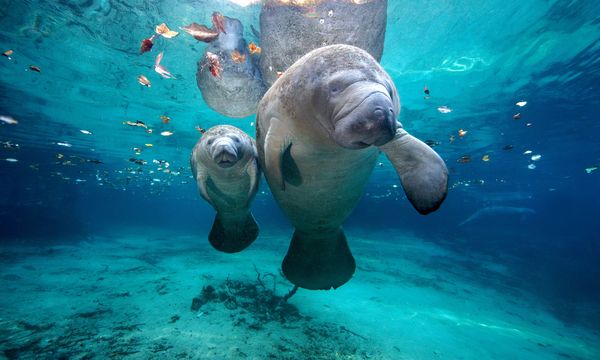
As I've chronicled in the archives of this very website, I am obsessed with manatees. I have loved them, adopted them, and convinced everyone I know that I need at least three tea infusers created in their likeness. But at some point in my adult life, I became aware that my beloved regal, wrinkly-faced creatures are not the only adorable plant eaters of the sea. It turns out, my cherished manatee has a similarly glorious cousin in the flat muzzled dugong.
"Dugongs are the closest living relatives to manatees," Gillian Spolarich, international communications manager at Oceana, an organization dedicated to protecting and restoring the oceans, writes via email. "Both are herbivorous, primarily grazing on sea grasses and spending most of their time in seagrass beds."
Advertisement
The Australian Museum describes them as having a "large, grey brown bulbous animal with a flattened fluked tail, like that of a whale," dugongs have paddle-like flippers, no dorsal fin, and a broad, flat muzzle and mouth that are angled down to help them easily eat their favorite grassy foods. They have small eyes and ears because, like manatees, they don't rely on their senses much for survival — they just go about their business, looking for plant-based treats.
Manatees Live in Fresh Water, Dugongs in Salt Water
While dugongs like to chomp on underwater plants like their manatee family members, they're distinct in one specific way: They never enter fresh water. That means they're the only exclusively marine mammal that is herbivorous. And one detail from the Oceana website that simultaneously breaks and warms my heart: "... as in most herbivores, the dugong's brain is very small compared to its body size, likely because it does not have to develop complex hunting strategies to capture prey."

Advertisement


